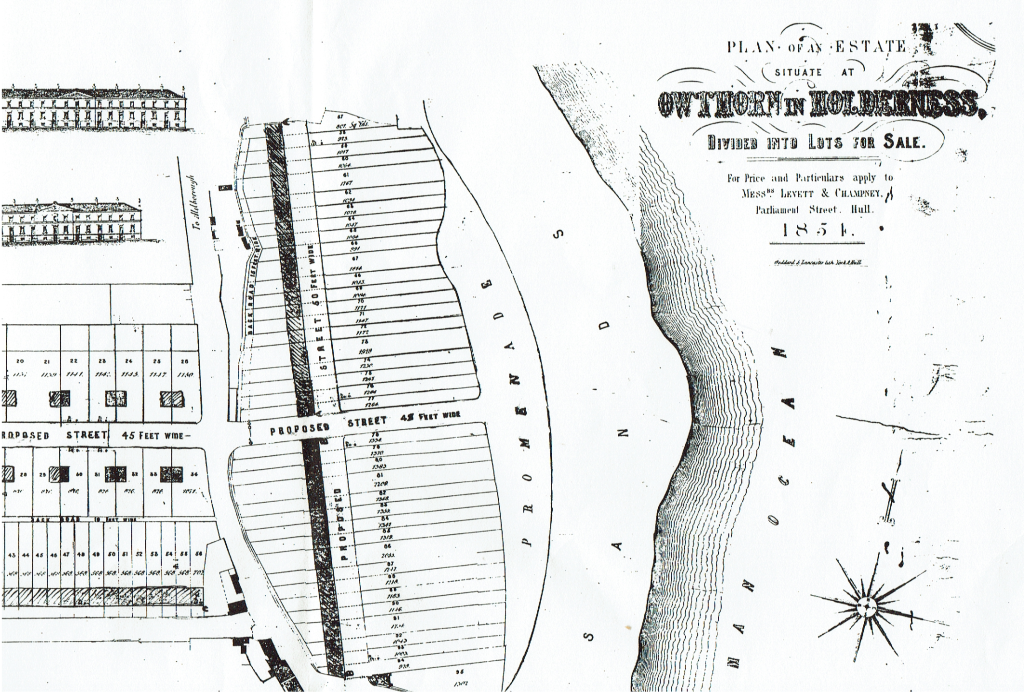
The Hull and Holderness Railway Co. was promoted and largely funded by Anthony Bannister, businessman of Hull. He wanted to develop the terminus at Withernsea as an up-market resort and in anticipation of this bought-up large parcels of land in the parish on which his plans would be put into effect, then selling the housing at a profit. He commissioned Hull’s later-to-be-famous architect Cuthbert Brodrick to design the elegant streets and the general lay-out plan. The scan above is part of Brodrick’s plan and shows two terraces of high status housing facing the Promenade and sea, and west of these a grid-plan of streets, some with substantial semi-detached houses with considerable garden plots. Although only two of Brodrick’s proposed houses were built the street plan remained to today, later to have sections of by-law housing built either side of the roads.
The nature of Brodrick’s proposed Promenade is uncertain to me, but may have been just the natural cliff-line planted with root-binding grasses and allowing access to the sandy beach. If so, this would have provided only temporary respite from coastal erosion as today concrete walls are needed further reinforced by large boulders of Scandinavian granite positioned at the base of the promenade wall.
Brodrick’s planned housing was, in fact, in the traditional parish of Owthorne, to the north of the present day Valley Gardens (no longer gardens), main street and pier-head. The rail station was to be just south of Brodrick’s Promenade.
Valley Garden, the centre for public functions in Withernsea today, is a remnant of a once-upon-a-time mere. The names Withernsea, Hornsea and Kilnsea relate to their Anglo-Saxon past when they were sited beside a ‘pool’, ‘lake’ or ‘mere’, all then well inland. The fact that they are now beside the ‘sea’ is a coincidence of History and Geography.